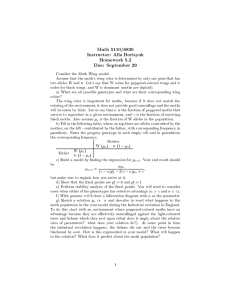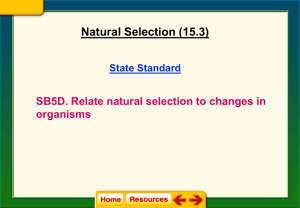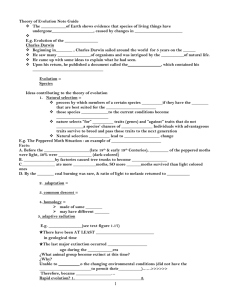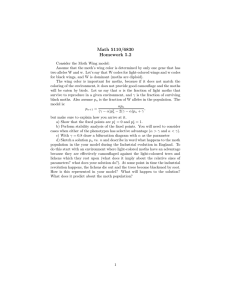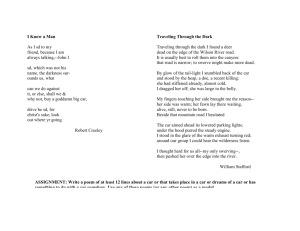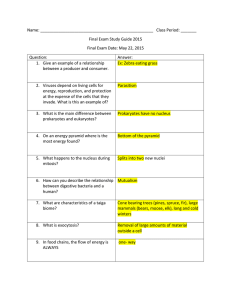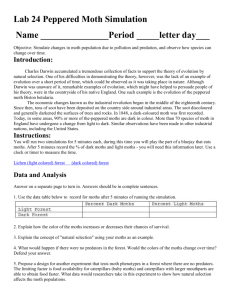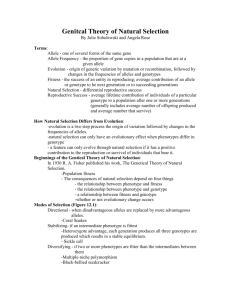Document 12159654
advertisement
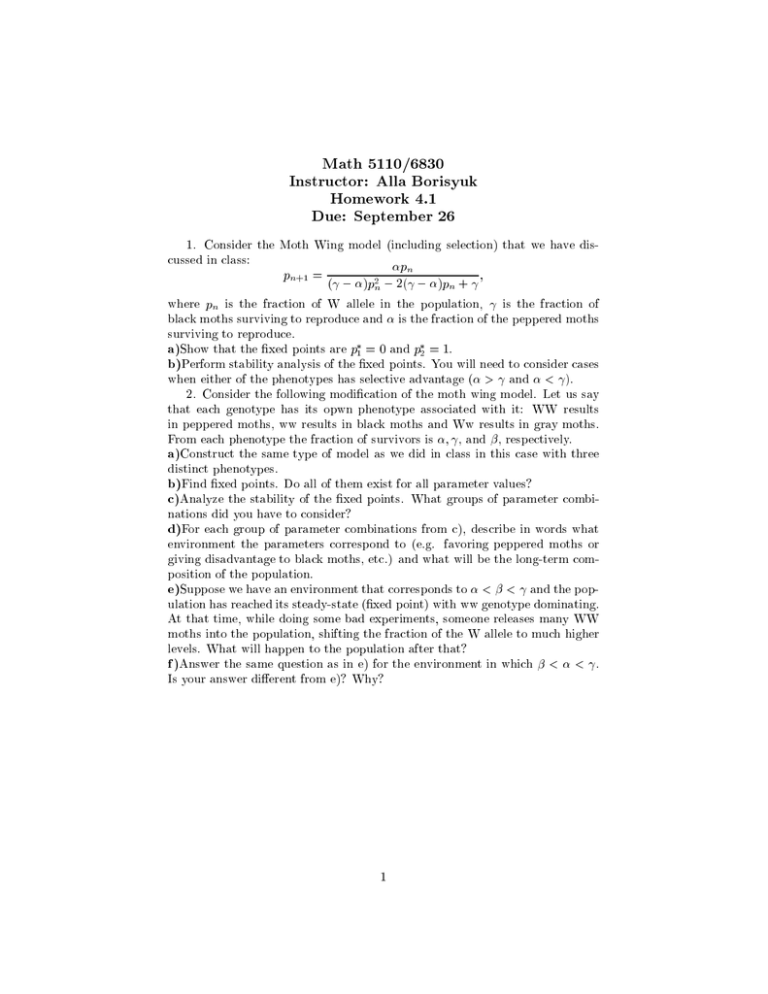
Math 5110/6830 Instructor: Alla Borisyuk Homework 4.1 Due: September 26 1. Consider the Moth Wing model (including selection) that we have discussed in class: pn pn+1 = 2 ( )pn 2( )pn + ; where pn is the fraction of W allele in the population, is the fraction of black moths surviving to reproduce and is the fraction of the peppered moths surviving to reproduce. a)Show that the xed points are p1 = 0 and p2 = 1. b)Perform stability analysis of the xed points. You will need to consider cases when either of the phenotypes has selective advantage ( > and < ). 2. Consider the following modication of the moth wing model. Let us say that each genotype has its opwn phenotype associated with it: WW results in peppered moths, ww results in black moths and Ww results in gray moths. From each phenotype the fraction of survivors is ; , and , respectively. a)Construct the same type of model as we did in class in this case with three distinct phenotypes. b)Find xed points. Do all of them exist for all parameter values? c)Analyze the stability of the xed points. What groups of parameter combinations did you have to consider? d)For each group of parameter combinations from c), describe in words what environment the parameters correspond to (e.g. favoring peppered moths or giving disadvantage to black moths, etc.) and what will be the long-term composition of the population. e)Suppose we have an environment that corresponds to < < and the population has reached its steady-state (xed point) with ww genotype dominating. At that time, while doing some bad experiments, someone releases many WW moths into the population, shifting the fraction of the W allele to much higher levels. What will happen to the population after that? f )Answer the same question as in e) for the environment in which < < . Is your answer dierent from e)? Why? 1
